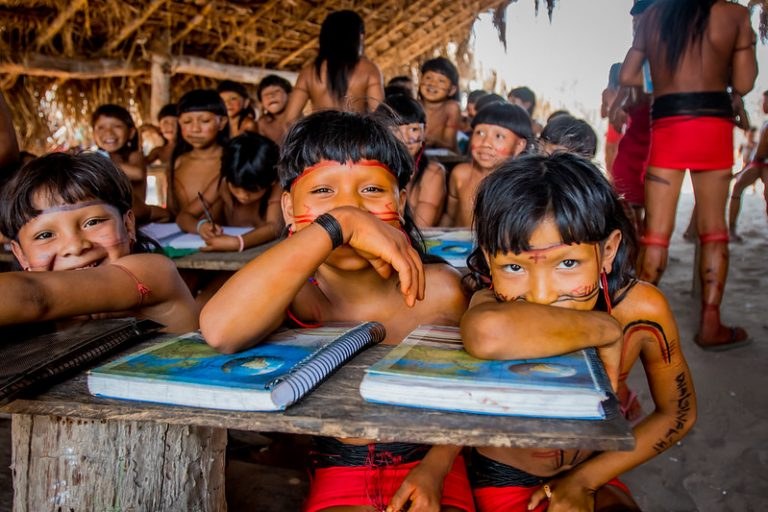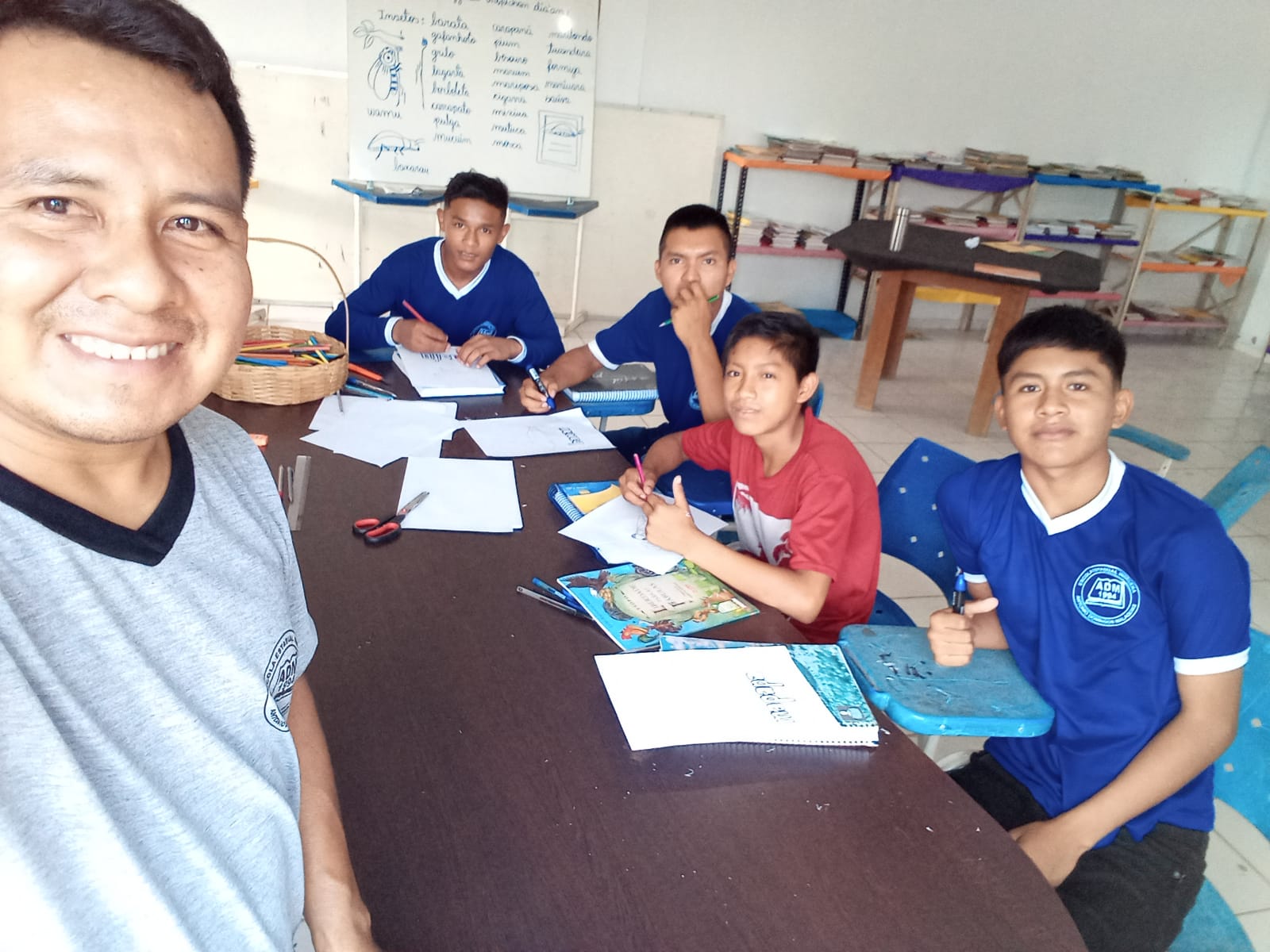Indigenous languages, essential for preserving ancestral knowledge, could disappear in 20 years
Today, approximately 274 indigenous languages are spoken in Brasil, a number that reached 1,200 before European colonization of the Country. Knowledge passed on orally to new generations is fundamental in the fight against climate change, a priority for the Brazilian presidency at the G20.
Keeping alive the languages spoken by originary peoples is essential to preserving ancestral knowledge present in indigenous communities spread across different regions of the world. These languages hold specialized knowledge about different biomes, which is passed down orally from generation to generation, and which plays a fundamental role in preserving the environment and combating climate change.
“Indigenous languages contain inventories of species, classification systems, etiological narratives and, above all, ways of managing diversity, a fundamental technology for the preservation and biorestoration of the environment. Language loss implies the loss of knowledge that is crucial to dealing with the climate and environmental crisis of our time”, affirms Altaci Corrêa Rubim/Tataiya Kokama, a researcher at the Department of Linguistics, Portuguese and Classical Languages of the Institute of Letters of the University of Brasília (UnB), in an exclusive article for the G20 Brasil website, also available in the language of the Kokama ethnic group.
The United Nations Educational, Scientific and Cultural Organization (UNESCO) has proclaimed the Decade of Indigenous Languages between the years 2022 and 2032. The organization's aim is to draw attention to the process of loss of indigenous languages, and the need to think about actions to protect, revitalize and promote these languages.
Today, approximately 274 indigenous languages are spoken in Brazil, not counting the unknown languages of isolated indigenous people, according to the 2010 IBGE census. According to a study by Brazilian linguist Aryon Dall'Igna Rodrigues, who was a professor at the University of Brasilia, there were approximately 1,200 indigenous languages in the past, when Europeans arrived in Brazil. Aryon based his study on chronicles and information about indigenous peoples dating back to the first centuries of Portuguese colonisation.


The art of teaching an indigenous language
In the Tabalascada indigenous land, in the municipality of Cantá, in Roraima (RR), Minuro Augustinho Cruz has lived and worked for 12 years as a Wapichana language teacher at the Antônio Domingos Malaquias Indigenous State School.
Tabalascada has 14,000 hectares and 1,058 residents, divided between the Macuxi and Wapichana ethnic groups, and the school where Minuro teaches has 58 students. Known as Masuiki in the Wapichana language, he says that there weren't many residents available for the task of teaching children and teenagers, so he decided to apply for the position of indigenous language teacher. In the mornings, Minuro works on speaking and pronunciation with children from 1st to 5th grade, and in the afternoons on grammar, the values of his people and history with pre-teens from 6th to 9th grade.
“We, teachers, are strengthening and valuing our culture, and I feel like I'm contributing to my community. We work with older teachers who are still fighting, we develop projects together and we learn from them each day," says Minuro.
The teacher also feels happy and proud to help the community as an interpreter and translator. When there is a big meeting or assembly, the teachers are called in to translate lines into Portuguese, as there are residents who only speak the native language. According to Minuro, another moment of great honor is the presentation of cultural events, such as the Parixara Dance, a ritual with music and dance practiced by both the Wapichana and Macuxi indigenous people. The teachers are called upon to present the dance both inside the schools and outside, in open spaces.
“We, teachers, are strengthening and valuing our culture, and I feel like I'm contributing to my community. We work with older teachers who are still fighting, we develop projects together and we learn from them each day," says Minuro.
The proximity to the capital Boa Vista and the influence of non-indigenous culture, especially for teenagers, are also challenging issues. Some young people prefer to hide their indigenous identity and no longer want to speak the language. But the teacher remains optimistic. “I'm not afraid of losing my language, because the guarantee we have is that our children and grandchildren will still speak Wapichana. I worry that one day it will end, but there is still a large portion of the community that is fluent in the language. More or less 70% of the community is fluent.”
Minuro is confident that his work and that of the other teachers will help keep the language alive. Just as the religious rituals, indigenous games and the Parixara Dance will continue to strengthen the language and the native culture of his people, with the help of the leaders' defense and the exchange between the villages.
Linguist, professor and researcher Ana Suelly Arruda Câmara estimates that in 50 years around 20 indigenous languages could cease to be spoken in Brasil. She is the coordinator of the Laboratory of Indigenous Languages and Literatures at the Institute of Letters at the University of Brasilia, and has more than 30 years of studies and on-site experience in indigenous lands in various Brazilian states.
The researcher believes that UNESCO's initiative to decree a decade of indigenous languages (2022 - 2032) is very important, but only if it really has concrete actions, because the preservation of a language involves many factors such as social issues, the desire of the originary populations and the interest of public authorities in acting in favor of conserving the cultural heritage that indigenous languages represent.
The researcher says that there are peoples with only 5 or 8 speakers of the original language, usually elderly people. There is also a lot of exodus, migration to urban centers to study and work and the language loses speakers, because the children will no longer practice the original language, they will replace it with Portuguese or be bilingual.
The researcher says that there are peoples with only 5 or 8 speakers of the original language, usually elderly people. There is also a lot of exodus, migration to urban centers to study and work and the language loses speakers, because the children will no longer practice the original language, they will replace it with Portuguese or be bilingual.
For the researcher, the programs for preserving indigenous languages are isolated and often not experienced by the communities. There are research projects, documentation and pedagogical grammars on offer, but many of these projects remain on display and are not actually being used in the communities.
“Linguists and anthropologists can't save a language. For me, strengthening a language has to involve the whole community. Little children with their grandparents learning, or an adult with another adult, as master and apprentice. Because in order for a language to be revived, it has to be spoken. It's a long-term thing," argues the researcher.